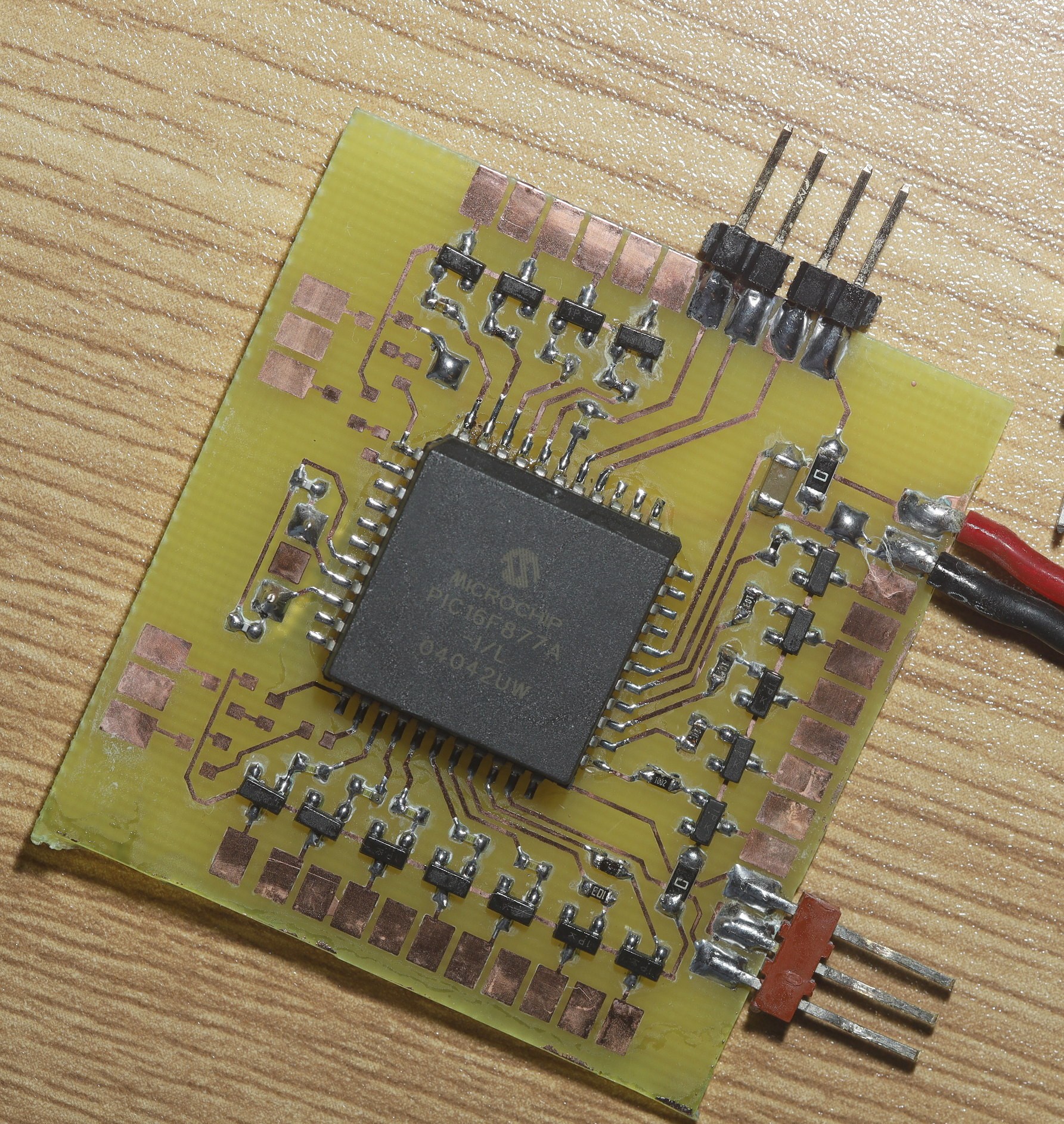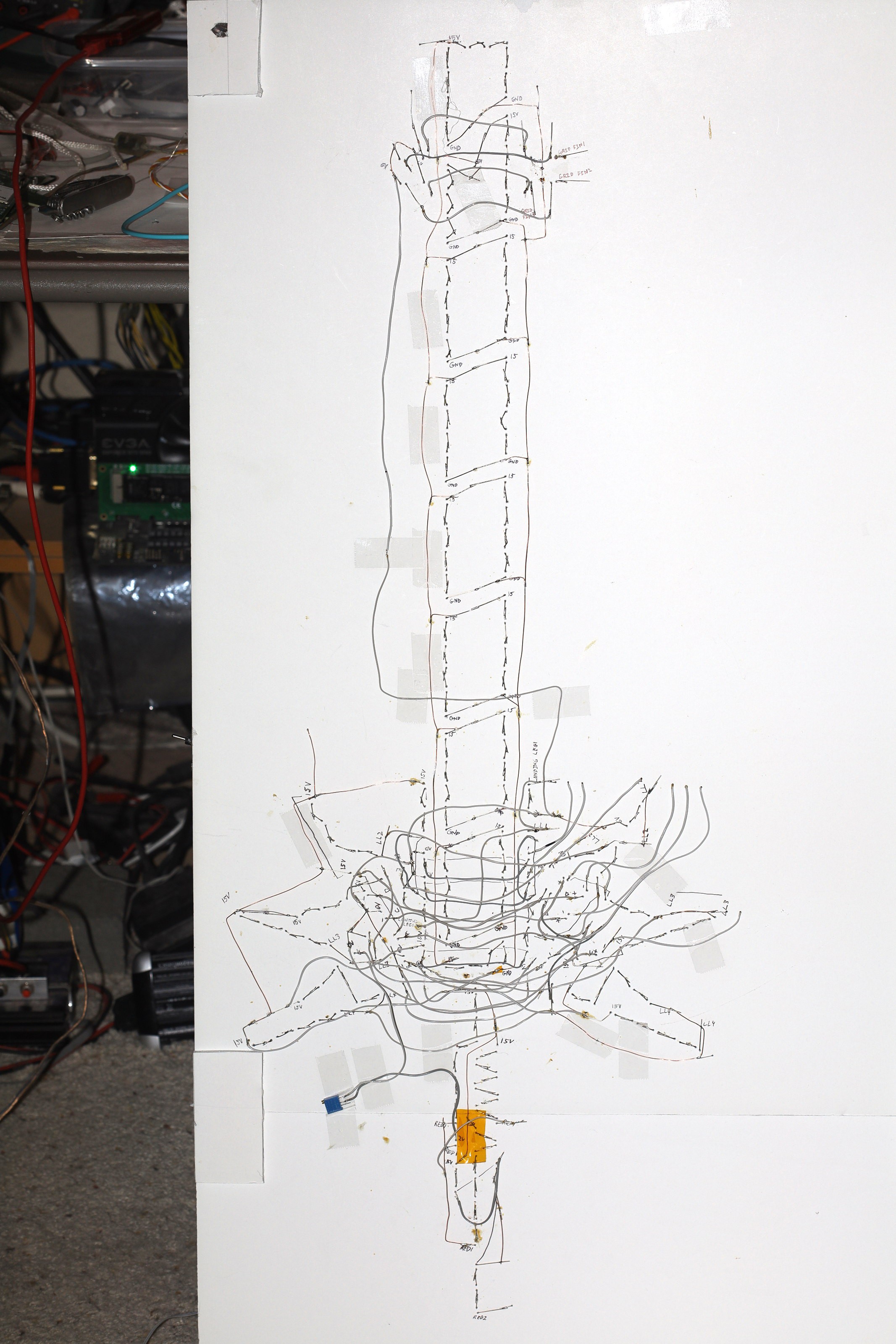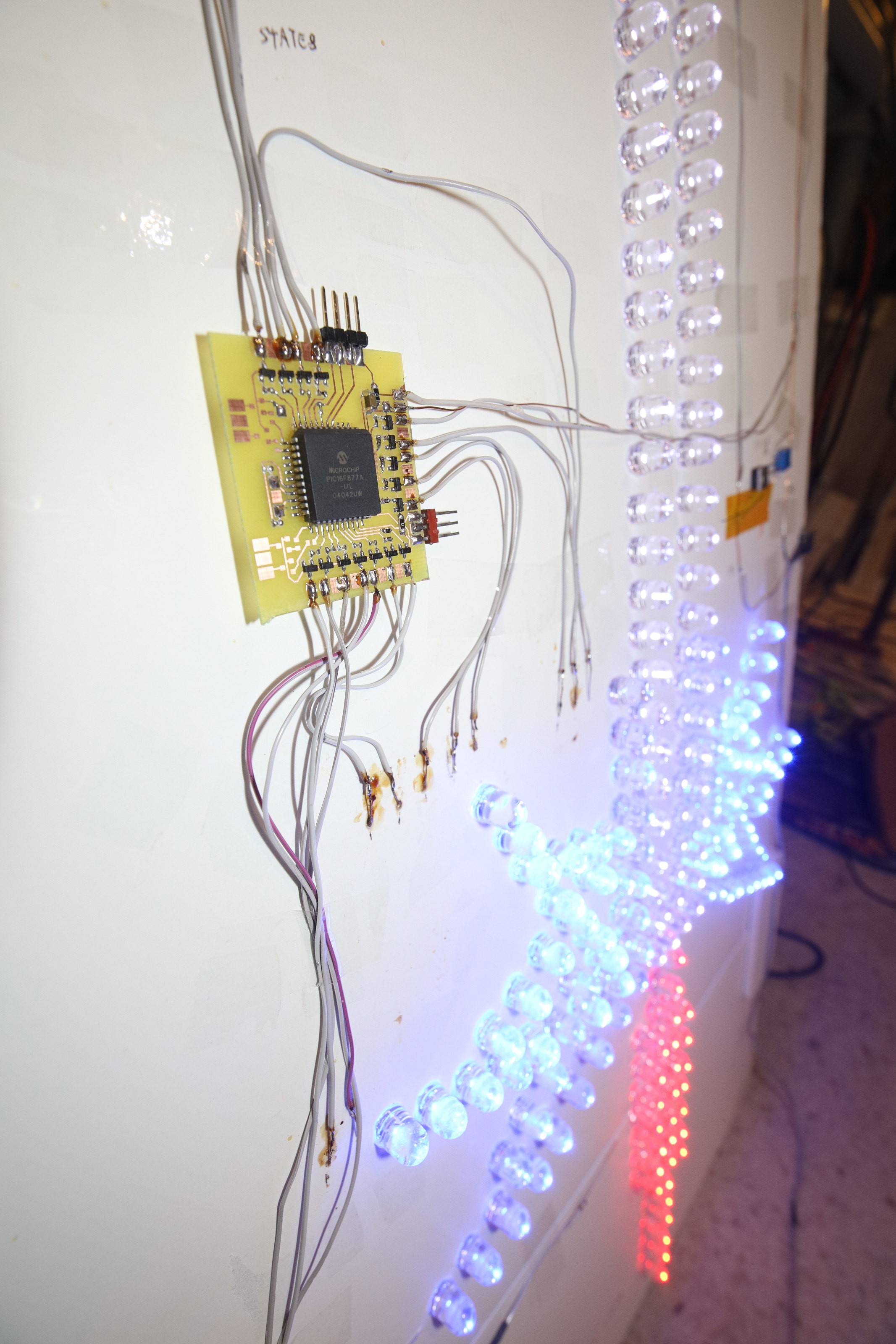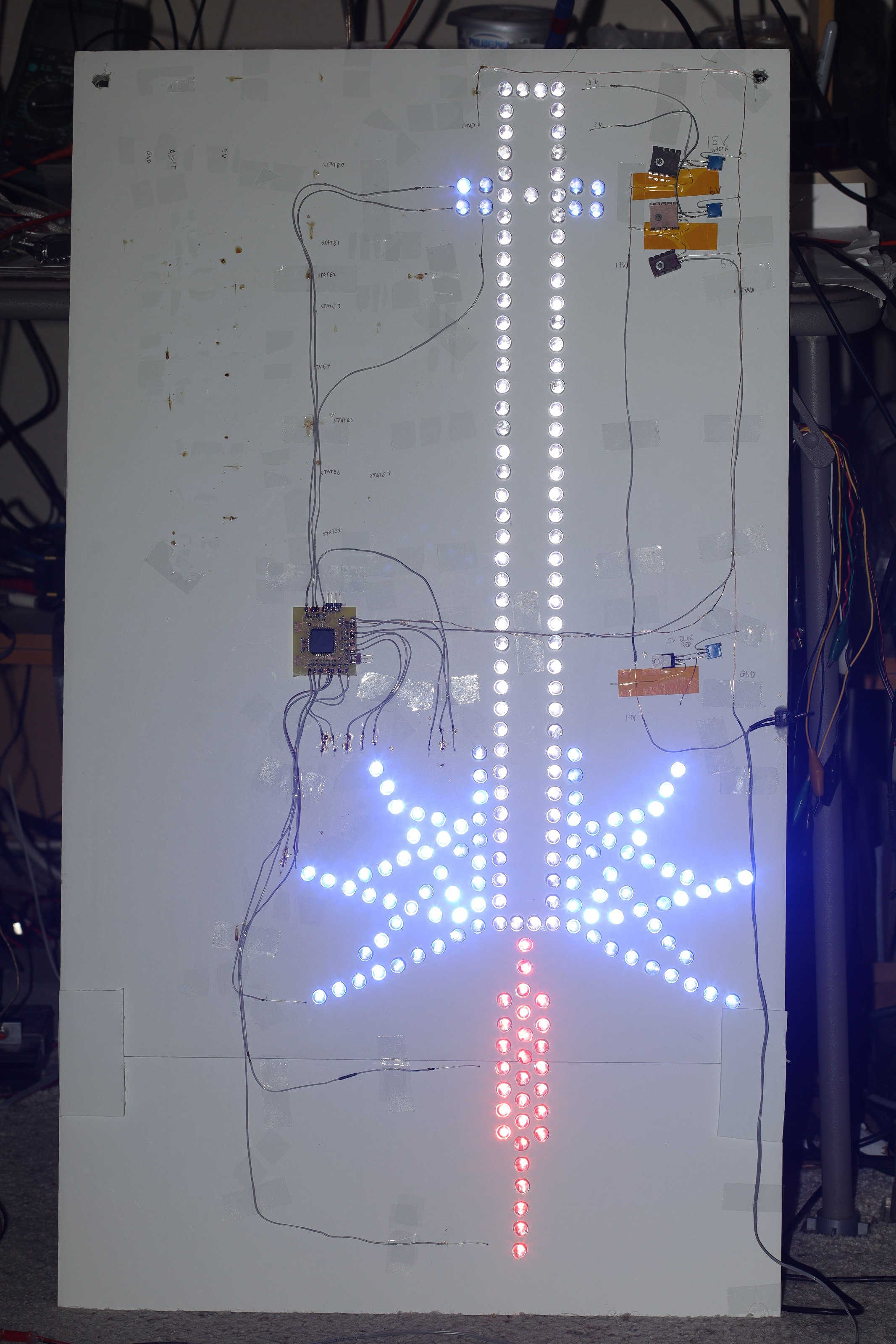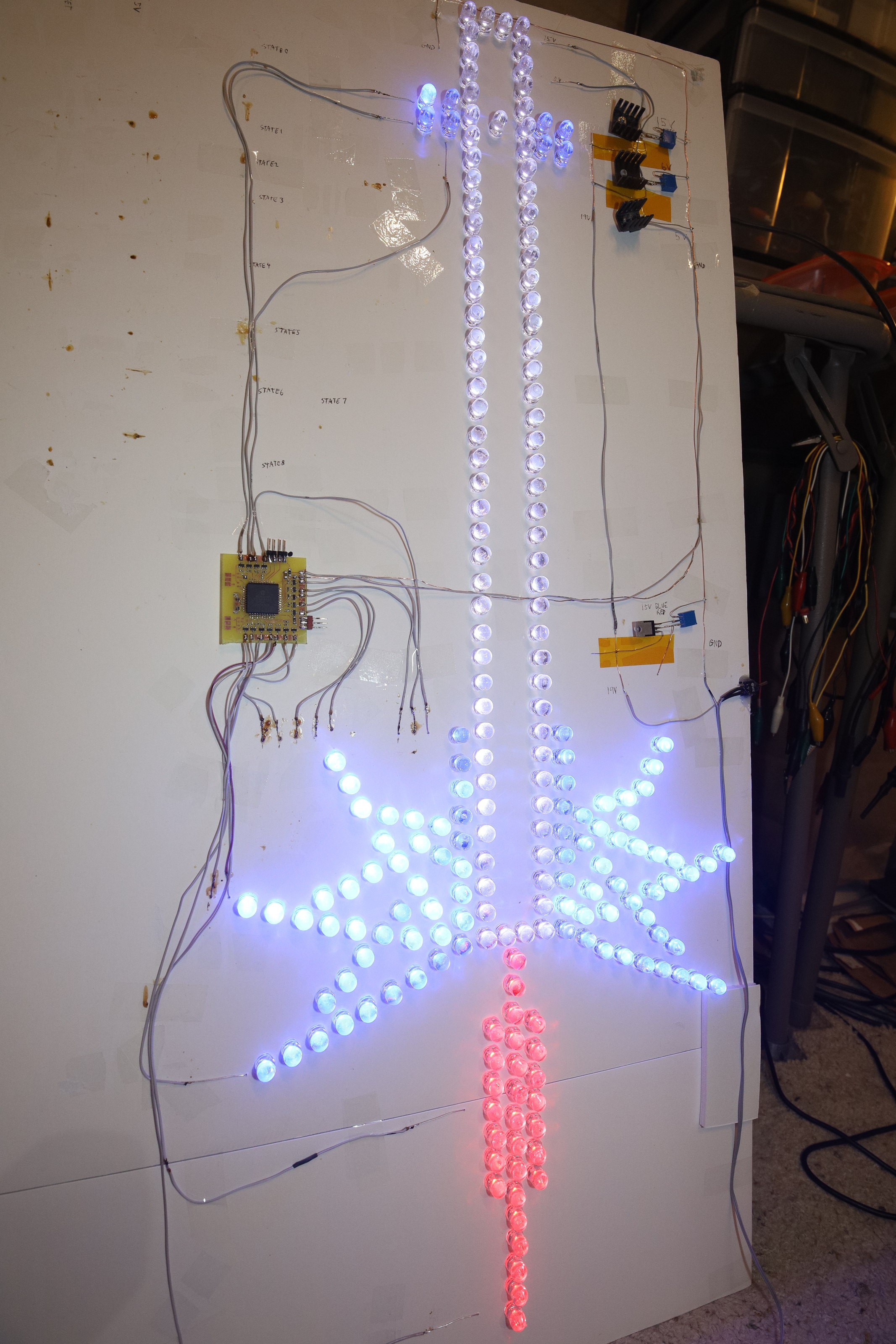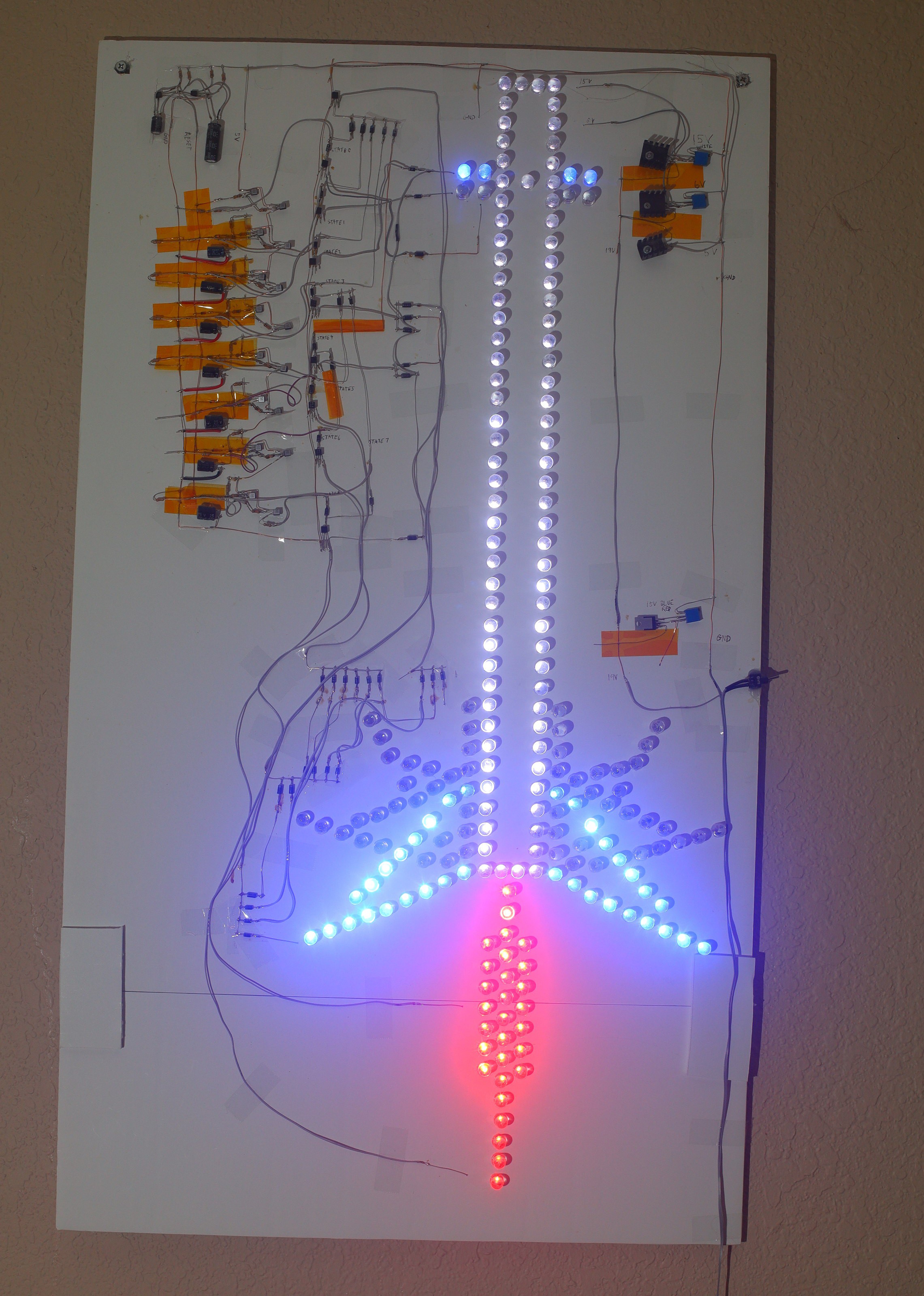-
Death of BJT's
11/22/2021 at 03:46 • 0 commentsAfter 2 years of flickering, uneven LEDs, & instant state changes, the pure BJT design finally succumbed to a modern 20 year old microcontroller. It just wasn't going to look good enough with 1970's parts, for any reasonable cost.
![]()
This is the last of the lion kingdom's 1st order of flash programmed microcontrollers. They were truly terrible to program in assembly with gpasm, when mplab was windows only & a virtual machine was $600 & required a bunch of kernel modules which didn't work. Using Linux made software real expensive in those days.
![]()
![]()
![]()
![]()
This got rid of all the bodge diodes & the flickering between states, but the LEDs were still uneven. It's not because of varying load between LED strings. It might be from running them at the lowest possible voltage instead of using current limiting resistors for every single LED.
The dissolves between LED states still couldn't be perfectly smooth. The 8 bit timer used has only 256 possible duty cycles. Even with a more fine grained timer, the duration of the smallest duty cycle is limited by the time needed to set the GPIOs. Making it more fine grained would require more clockspeed & lions are obsessed with using the lowest power possible. It runs on Commodore 64 grade 1 MIPS.
The normal animation uses 13W at 19V. If all the LEDs are on, it's 20W.
-
LED replacement #1
11/20/2021 at 08:28 • 0 comments![]()
So after 2 years, 2 burned out LEDs got replaced & the blue LED voltage got reduced from 7V to 6.7V. A few more diodes got replaced with shottkys to try to even out the brightness, but some of them barely light up & some of them don't turn off all the way. A lot of diodes were shottkys in the original circuit.
The problem of uneven brightness in the blue LEDs is bigger than originally envisioned. The LEDs aren't matched & the strings are different loads. Shottky diodes didn't make any significant difference so the diodes aren't the problem. Every single string would need some kind of adjustible resistor, a very expensive proposition. There's also the problem of flickering.
It would have looked bad in the 70's with only discrete analog circuits like this, so thoughts of redoing it all with a microcontroller have abounded. In fact, the lion kingdom vaguely remembers electronics looking this bad in the 70's but it only being bearable because it was all we had. It's not about the work as much as losing the retro appeal. At minimum, doing it once in pure analog showed it wasn't practical in pure analog. There could be a simpler art piece based on pure analog & simpler strings. The microcontroller would expand the effects.
LED animation using only BJTs
How far can a multivibrator & some delay switches go?
 lion mclionhead
lion mclionhead